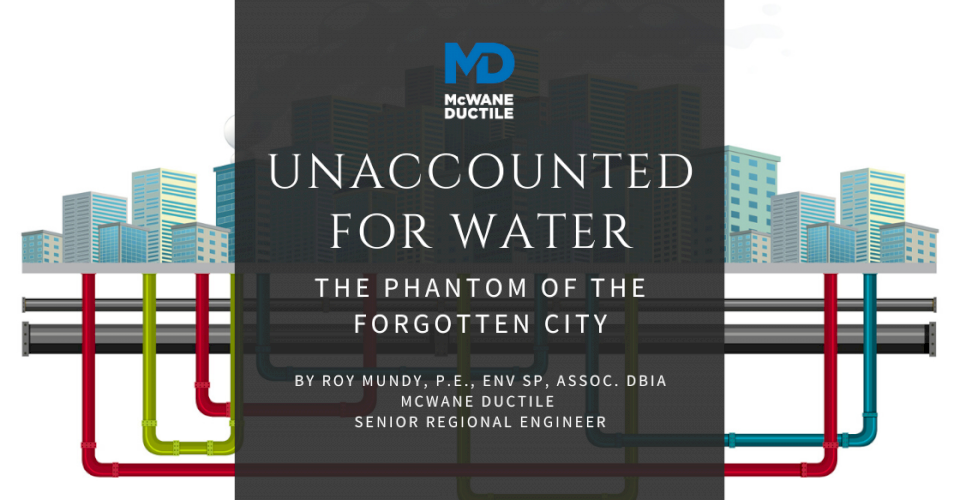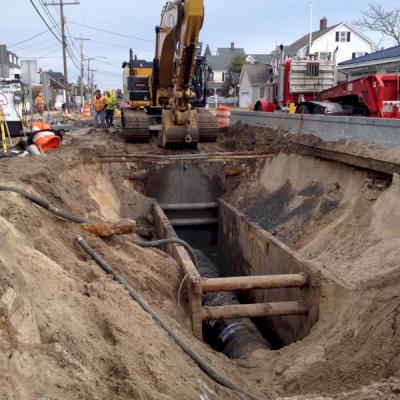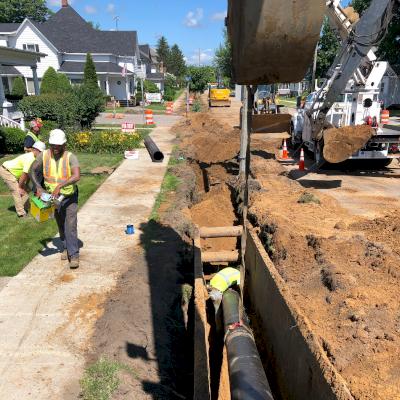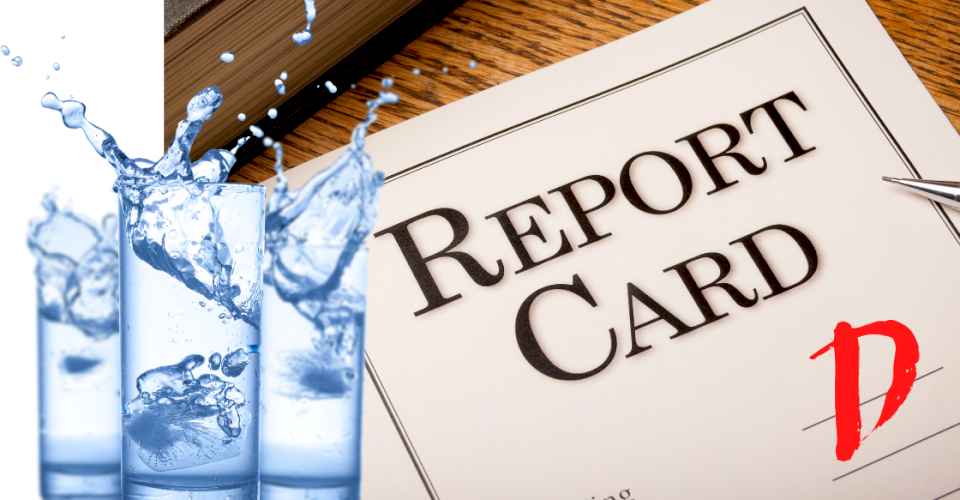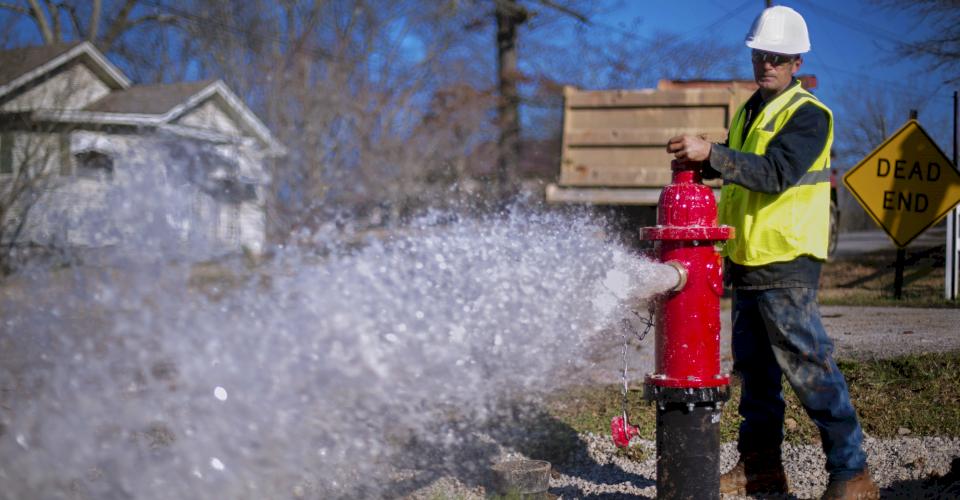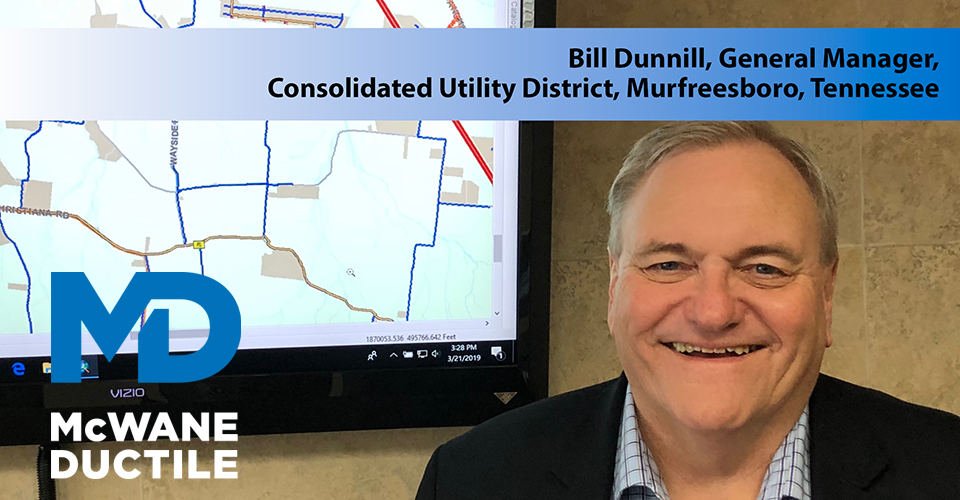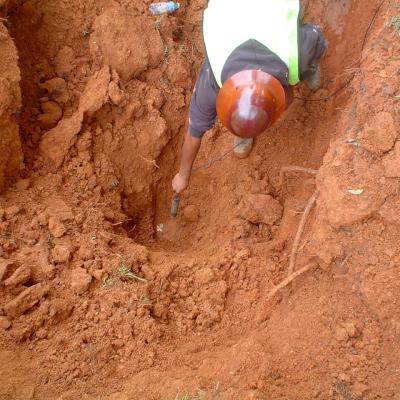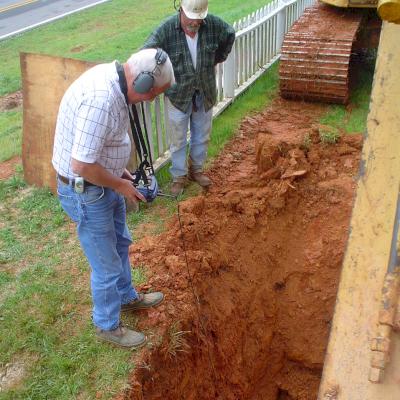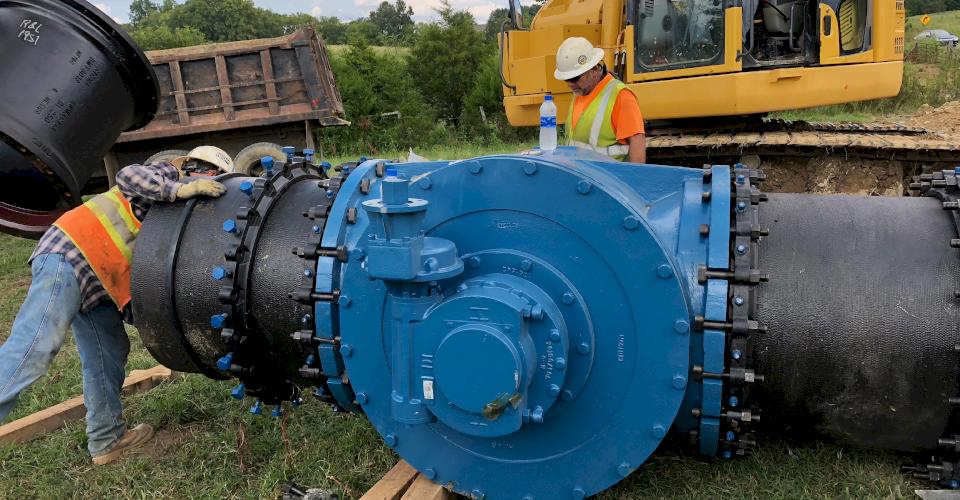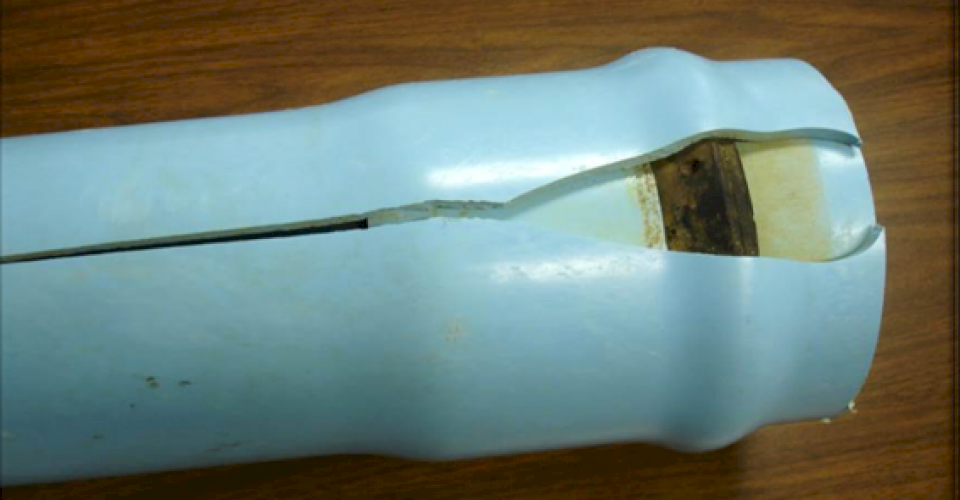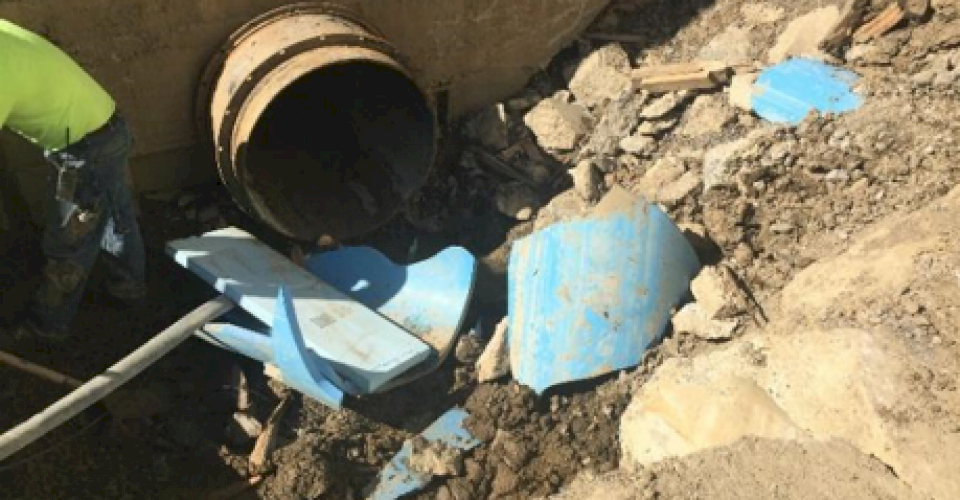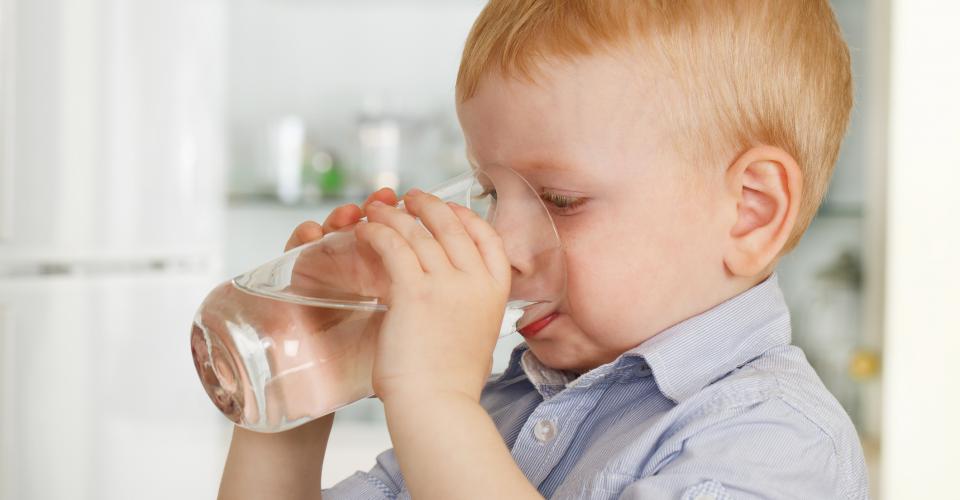Defining “Unaccounted for Water”
I have given several presentations wherein I have identified the distribution system of a water utility as The Forgotten City: Out of Sight, Out of Mind. Although the most significant capital investment for a water system is its pipeline infrastructure, many times, it gets less attention than other components such as pumps, motors, plant structures, pump stations, and even fire hydrants, all of which are visible to the eye. One mysterious component to some water utilities is Unaccounted for Water. Some say that like death and taxes, Unaccounted for Water will always be present, with the only issue being the degree to which it pervades.
In its recently published Infrastructure Report Card for 2017*, the American Society of Civil Engineers (ASCE) reported that six billion gallons of treated water are lost every day in the United States, which led to a D grade for the drinking water section of the report. Worldwide this estimate is 48.6 billion cubic meters per year (1 cubic meter is equal to 264.172 gallons). So how and why does this phantom still lurk with such magnitude in our water systems? This discussion may shed some light on the subject and how it is (or can be) addressed.
*ASCE publishes its grade card every four years, thus the 2017 report is the most recent version available at this time.
First, let us look at some terminology that should be clarified. The terms Unaccounted for Water and Non-Revenue Water are not interchangeable. Unaccounted for Water is water that cannot be quantified either via metering or through reasonably accurate estimations of water use. On the other hand, some examples of Non- Revenue Water include:
- use of water for construction
- known leakage
- tank drainage
- storage tank overflows
- line flushing
- fire protection
- bleeding or blow-offs done in the winter or for taste and odor concerns
- hydrant testing
- and other municipal uses such as:
- irrigation for golf courses
- Irrigation for parks
- street sweepers, among other things
All these water uses are non-revenue producing but should have estimated volumes to account for the water used.
Another factor that is non-revenue producing in comparison to the volume of water supplied is slow meters. A water meter will rarely “speed up” over time but is highly likely to “slow down” if not maintained or replaced over time. Therefore, in the case of a meter that has slowed, the true amount of water supplied to the customer is not recorded and falls into the category of Unaccounted for Water.
Now We’re Talking
There is a calculation that can be used to attempt to quantify Unaccounted for Water. It is the total amount of water sold subtracted from the total amount of water produced or purchased for the same period of operation, after subtracting the items of known or estimated non-revenue use from this differential.
Over the years, the percentage of perceived acceptable water loss (or Unaccounted for Water) in a water system was fifteen percent. However, The American Water Works Association’s (AWWA) Distribution and Plant Operation Division has recommended that non-revenue water loss should be less than ten percent, thus placing the actual percentage of loss for Unaccounted for Water at a significantly lower value.
In fact, the recommendation is not to think of water loss in terms of a percentage, but rather in terms of actual gallons lost. That way, the utility can better understand the magnitude and cost that this element represents in their operation.
True Unaccounted for Water in a Water System
The loss of water in a water system after non-revenue sources have been identified is primarily due to leaks in the system. Leaks can occur as a result of many factors. Examples include:
- leaks at fittings and appurtenances
- leaking joints due to improper installation
- pipe failure due to excessive pressure or unsuitable laying conditions
- frost heaving
- excessive or consistent external loading due to traffic, etc
Service connections from the waterline to the meter are also subject to these factors. Many leaks become evident quickly, but smaller leaks that go undetected can create more water loss over time and can cause extensive damage due to the undermining of streets and roadways.
I encourage you to visit another Iron Strong Blog where we interviewed Consolidated Utility District (CUD) General Manager Bill Dunnill and discussed Bill’s day-to-day challenges and successes, especially relating to water loss. Click here to read more of CUD’s story.
So, Let’s Go Find It
Several sophisticated methodologies can be used today to find leaks in water systems, including:
- Tracer Gas Method
- Infrared Imaging
- Camera Inspection
- Ground-Penetrating Radar
- Microwave Remote Sensing
However, acoustic leak detection is probably the most common and one of the most accessible forms of leak detection still used today. During WWII, the French used an early form of the sonoscope to listen for underground activity. This same principle of listening can be applied to water escaping a pipe under pressure caused by a leak.
Such a leak creates a sound wave of energy that travels along the pipe walls and water column. Sometimes if the leak is large enough, the sound wave may be transmitted to the surrounding soil or pavement. Sound waves travel in a straight path, which is known as “Rectilinear Propagation." Thus, sound waves become distorted when encountering pipeline fittings. Several variables contribute to the effective use of acoustic equipment:
- Pressure - the higher the pressure, the longer distance traveled by the sound wave.
- Soil Types,
- Water Tables
- Ground Cover
- Pipe Size - a sound wave’s velocity slows as the pipe size increases
- Pipe Materials - metallic pipe can transmit a sound wave over longer distances (as many as 10 times the distance) and at a higher velocity than plastic pipe.
Many water utilities have utilized a strategic approach to lowering the Unaccounted for Water in their system. Instead of waiting for the water to surface, addressing a customer call about low system pressure, or finding a sinkhole in the roadway, many utilities have enacted proactive measures in their water systems to find leaks.
Full-time personnel are now assigned to this task, which would have been a task for part-time personnel in the past. Electronic enhancements utilizing acoustic technology are coming to the forefront through AMI and listening devices on meters and other facilities.
Is There a Point of Diminishing Returns?
Utilities must continuously evaluate whether the financial implications of managing non-revenue water are worth the cost of doing so? A key term commonly associated with addressing this issue is ELL, the "Economic Level of Leakage." ELL is defined by the International Water Association as the level of leakage where the marginal cost of active leak control equals the minimal value of the leaking water.
According to this equation, some water utilities have allowed their Unaccounted-for Water to be somewhat high. It is important to remember that water leaking in the street (if it is not bulk purchased water) represents a lower unit cost than the rate at which its customers are billed. However, missing from this equation are several considerations.
First, there is damage to the surrounding environment that may be caused by roadways, etc. Second, our society has determined, and rightfully so, that water is a precious commodity to be valued and conserved. Therefore, a growing number of water utilities now take an aggressive approach to not only find and fix leaks in their systems but also to carefully review the materials they choose for pipeline installations.
Click the play button on the image below to learn more about the importance of upgrading and maintaining our nation's utility infrastructure.
How Can the Initial Selection of Pipeline Material on a Project Affect Unaccounted for Water?
In addition to the initial bid price of the pipeline material, many variables should be considered when properly selecting pipeline material. Establishing a trench that coincides with the required support strength (E’) of the bedding is critical in deterring future leakage. As a result of the inherent strength of Ductile iron pipe (DI pipe), the E’ value can be much less than that required for other pipeline materials, such as PVC. Consequently, native soil can be utilized for backfill with Ductile Iron.
However, select backfill must be brought in, and native soil must be hauled away when using PVC. Unfortunately, sometimes designs do not allow for establishing this proper E’ value or corners are cut by the contractor, thus causing leaks where the PVC pipe is connected.
Additionally, there have been documented cases where certain types of machinery, such as a backhoe, "pushed home," the spigot end of PVC pipe into the bell. This causes over-belling of the pipe, again creating a potential leak scenario at the connection. This over-belling cannot occur with DI pipe.
Leaks have also occurred at valve and fitting locations where proper support is not placed underneath valves and fittings, thus allowing PVC pipe to bend under the weight. Once again, this issue does not take place when using DI pipe.
In terms of the operational capability of pipeline material, Ductile iron is far superior to most other materials, including PVC. DI pipe contains a 100-psi surge protection allowance, plus a safety factor of 2. Therefore, Class 350 DI pipe can withstand pressures equal to 900 psi, which is many times greater than that of other materials.
This is important when the unintended system surges occur. Such surges can create failure and thus leakage in different types of pipelines. These factors were among several highlighted in a recent University of Michigan Research Study, wherein it was found that the frequency of main breaks in PVC pipe far exceeded that of DI pipe.
Another prominent factor that ultimately affects unaccounted for water is the estimated service life of the pipeline material itself. When the pipe comes to the end of its service life, leaks start to happen. The American Water Works Association, in its research report "Buried No Longer," provides information regarding the estimated service life of varying pipeline materials for different sizes of pipe in various regions of the country.
DI pipe is noted as having a superior estimated service life compared to other materials, in many cases, by a factor of two. This AWWA research has been further validated by the University of Michigan research mentioned earlier, specific to DI pipe compared to PVC pipe wherein the service lives are estimated to be 100 years and 50 years, respectively.
Oil of the 21st Century
Clean drinking water has been labeled the Oil of the 21st Century. The quality of life of every community and every individual is affected by access to good quality drinking water. Individual health, economic development, and community vitality are all dependent on this key asset.
Over the years, we have been blessed in this country with adequate water in most areas. However, population demographics have left some water supplies strained. Thus, one component among others to provide communities with an adequate supply of quality water is minimizing unaccounted for water.
Need Assistance with Your Waterworks Project?
If you have any questions or need additional information, please feel free to contact your local McWane Ductile Representative. We have team members who’ve managed small and large water utility systems, served in engineering consulting firms, and bring decades of experience in solving field issues involving pipeline construction and operation. From design to installation, we strive to provide insightful education and assistance to water professionals throughout the water and wastewater industry.
Check out all our digital offerings

